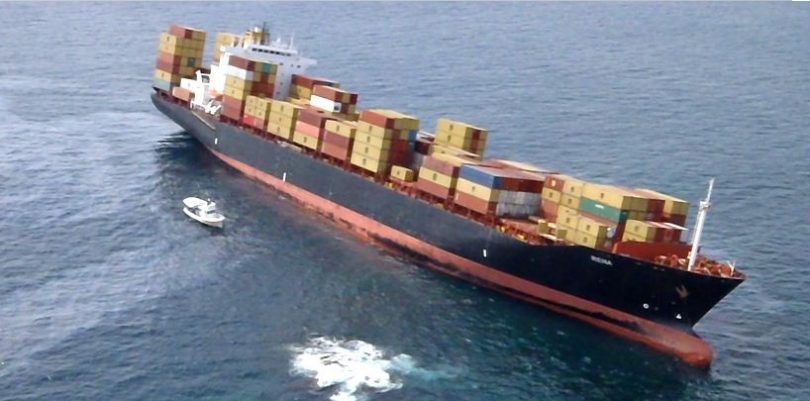When the Master judges that re-floating the vessel is hopeful, re-floating by the vessel should be tried first, but the following items shall be investigated to judge the propriety of re-floating work. Investigation using divers shall be carried out in parallel if possible.
- Degree of Flooding, if any, and Discharging Capacity Sound each tank and bilge periodically to check for leakage and to estimate the rate of leakage. If the leakage rate exceeds the discharging capacity, external assistance is required.
- Collection of Basic Data The Draft, Speed, Tidal conditions (Time, Height, Direction and Speed), Quantity and arrangement of Fuel oil, Ballast water, Fresh water, and the type, quantity/ weight, and stowage conditions of Cargo onboard.
- Stranding Conditions Degree and Extent of the Stranding, and the Heel of the vessel.
- Seabed Conditions Sound the Depth around the vessel and investigate the Nature of the Seabed.
- Location and Degree of Damage Carry out internal inspection of tanks as far as possible
- Oil Leakages or Threat of Oil leakages
- Necessity of reinforcing water tightness, and necessary materials on hand.
Self -refloating by Use of Engine
After De-ballasting to reduce the draft as much as possible, re-floating the vessel by itself at a high tide using the engine and rudder shall be considered. Use the Engine of the vessel after very prudent considerations since there is a possibility of expanding the damage to the machinery and hull. Check
- Condition of the seabed around the stern and in the direction of maneuvering when clear (a survey by a lifeboat may be required);
- Integrity of the hull and damage stability;
Discharging ballast and fresh water Prepare discharging operations in such a way that completion will be just about at the high tide. If discharge is carried out too early, there is a prospect of expanding the hull damage and increasing the vessels list.
Requesting salvage
If re-floating by own means is judged to be difficult or there are doubts as to the safety of the vessel during and after the operation, external assistance shall be used. This would involve offshore unloading and/or arrangement of Tug boats. However, the contents of the agreement with salvers shall follow the Companys instructions, except in an emergency when try to use the Lloyds Open Form.


Leave a Comment